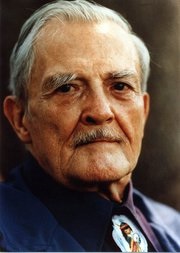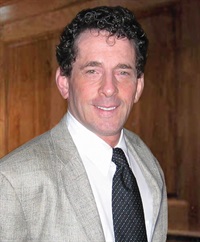Advanced Techniques of Hypnosis & Therapy: Therapy within a Marital System
Credit Available - See Credits tab below.
Total Credits: 2.5 including 2.5 A.P.A.
- Average Rating:
- Not yet rated
- Topic Areas:
- Hypnosis | Advanced Techniques of Hypnosis & Therapy | Continuing Education | Ericksonian Hypnosis and Therapy Techniques | Milton Erickson | Seeding | Utilization | Marriage
- Categories:
- Advanced Techniques of Hypnosis & Therapy | Featured | Training Videos | Online Continuing Education | Milton H. Erickson Collections
- Faculty:
- Milton H. Erickson MD | Jeffrey Zeig, PhD
- Course Levels:
- Master Degree or Higher in Health-Related Field
- Duration:
- 02:27:00
- Format:
- Audio and Video
- Original Program Date:
- Dec 31, 1977
- License:
- Never Expires.
Description
Description:
Commentary by Jeffrey K. Zeig, Ph.D.
This hypnotherapeutic session took place in 1978, and decades later, it’s just as powerful and engaging. Enhancing the viewer’s learning experience is Dr. Zeig’s discussion of the underlying elements of Erickson’s methods: the ARE model of instruction; the art of parallel communication; targeted utilization; and the use of implication. Erickson’s fluid repertoire, drawn from systematic thinking, includes the use of anecdotes, symbolic communication, and strategic seeding. The elicitation of solutions, based on promoting constructive associations and flexible thoughts and feelings, is an area of particular interest and one in which Erickson was especially elegant.
Credits
2.5 credits available.
The Milton H. Erickson Foundation, Inc. is approved by the American Psychological Association to sponsor continuing education for psychologists. The Milton H. Erickson Foundation, Inc. maintains responsibility for this program and its content.
THE MILTON H. ERICKSON FOUNDATION Policy on Disclosure
The Milton H. Erickson Foundation is proud of the conferences and other
educational opportunities it sponsors, taking care that the conduct of
these activities conforms to the standards and principles of behavioral
and medical sciences, thus ensuring balance, independence, objectivity
and scientific rigor in all individually sponsored or jointly sponsored educational
activities.
All faculty members participating in a sponsored activity, and those who
review and therefore are in control of content, are requested to disclose
any relevant financial relationship prior to the CME activity, including but
not limited to specific commercial interests, financial remuneration received
by faculty member or spouse, and what role or activity was performed
for this remuneration. If a conflict of interest exists as a result of
a financial relationship it will be resolved prior to the activity. A faculty
member will not be allowed to present if the conflict is not or cannot be
resolved.
Faculty

Milton H. Erickson MD Related Seminars and Products
Milton H. Erickson, MD, was an American psychiatrist who specialized in medical hypnosis and family therapy. He was founding president of the American Society for Clinical Hypnosis and noted for his approach to the unconscious mind as creative and solution-generating.
Dr. Erickson was plagued with enormous physical handicaps for most of his life. At age 17, he contracted polio and was so severely paralyzed that doctors believed he would die. While recovering in bed, almost entirely lame and unable to speak, he became strongly aware of the significance of nonverbal communication – body language, tone of voice, and the way that these nonverbal expressions often directly contradicted the verbal ones. He also began to have “body memories” of the muscular activity of his own body. By concentrating on these memories, he slowly began to regain control of parts of his body to the point where he was eventually able to talk and use his arms again. His doctor recommended exercising his upper body only so Milton Erickson planned a 1,000 miles canoe trip to build up the strength to attend college. His adventure was challenging, and although he still did not have full use of his legs at the end, he was able to walk with a cane.
The Ericksonian approach departs from traditional hypnosis in a variety of ways. While the process of hypnosis has customarily been conceptualized as a matter of the therapist issuing standardized instructions to a passive patient, Ericksonian hypnosis stresses the importance of the interactive therapeutic relationship and purposeful engagement of the inner resources and experiential life of the subject. Dr. Erickson revolutionized the practice of hypnotherapy by coalescing numerous original concepts and patterns of communication into the field.
The novel psychotherapeutic strategies which Dr. Erickson employed in his treatment of individuals, couples, and families derived from his hypnotic orientation. Although he was known as the world’s leading hypnotherapist, Dr. Erickson used formal hypnosis in only one-fifth of his cases in clinical practice.
Dr. Erickson effected a fundamental shift in modern psychotherapy. Many elements of the Ericksonian perspective which were once considered extreme are now incorporated into the mainstream of contemporary practice.

Jeffrey Zeig, PhD Related Seminars and Products
Jeffrey K. Zeig, PhD, is the Founder and Director of the Milton H. Erickson Foundation and is president of Zeig, Tucker & Theisen, Inc., publishers in the behavioral sciences. He has edited, co-edited, authored or coauthored more than 20 books on psychotherapy that appear in twelve foreign languages. Dr. Zeig is a psychologist and marriage and family therapist in private practice in Phoenix, Arizona.
Alternate Options
|
Advanced Techniques of Hypnosis & Therapy: Therapy within a Marital System (German)
Original Program Date: 12/31/1977 |
Reviews
Advanced Techniques of Hypnosis & Therapy: The Process of Hypnotic Induction - Video Stream
Rating: Not yet rated
$75.00 - Base Price
Advanced Techniques of Hypnosis & Therapy: Working with Resistance - Video Stream
Rating: Not yet rated
$75.00 - Base Price
A Teaching Seminar with Milton Erickson Part 1 - Seeding a Theme (No CE Credit) - Video Stream
Rating: Not yet rated
$29.95 - Base Price
Advanced Techniques of Hypnosis & Therapy: Symbolic Hypnotherapy - Video Stream
Rating: Not yet rated
$75.00 - Base Price
Dr. Erickson's Approaches to Cancer Pain (No CE Credit) - Video Stream
Rating: Not yet rated
$29.95 - Base Price
Dr. Erickson's Orientation to Sexual Development (No CE Credit) - Video Stream
Rating: Not yet rated
$19.95 - Base Price
Dr. Erickson's Orientation to Sexual Development Part 2 (No CE Credit) - Video Stream
Rating: Not yet rated


